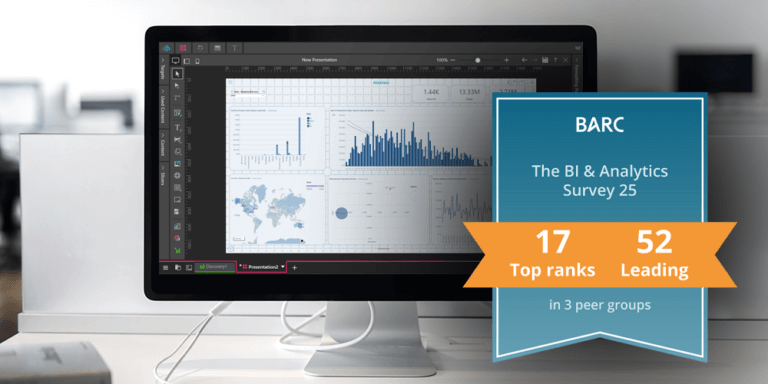In today’s fast-changing business landscape, agility isn’t just about speed, it’s about adaptability. For analytics leaders, that means having a framework that allows you to respond to evolving needs without constantly reinventing the wheel. That’s where composable analytics comes in.
As defined by Gartner, composable analytics refers to the modular design of analytics platforms that allows organizations to combine and reuse components across workflows and use cases. This isn’t a new layer of abstraction or a buzzword in disguise. It’s an architectural philosophy with practical implications: faster development, better reuse, and governed flexibility.
According to Gartner’s 2025 Critical Capabilities report, dominant vendors in the analytics space enable not just functionality, but agility, particularly when analytics needs to extend into user-facing applications and third-party portals. Embedded analytics is no longer an afterthought; it’s often at the frontline. And composability is what makes that work.
Why composability matters
The traditional analytics stack has often been rigid. ETL tools were separate from business intelligence (BI) software, which were separate from reporting engines, and none of it played well with the rest of the business tech stack. Modern composable analytics platforms allow each of these capabilities to operate as modular services within a unified environment.
This is crucial because real-world analytics workflows rarely follow a linear path. Data scientists want programmatic access to pipelines. Business users need self-service dashboards. Analysts want reusable logic and governed metrics. Composable analytics supports all of these personas by allowing teams to mix and match components, including data prep, modeling, visualization, storytelling, and AI, without fragmenting governance or logic.
The shift toward composability reflects a broader enterprise trend: from closed, monolithic systems to open, adaptive ecosystems. Just as composable architecture has transformed enterprise SaaS and infrastructure, it’s now reshaping how organizations approach analytics.
Embedded analytics: composability in action
One of the clearest use-cases for composable analytics is embedded analytics. Embedding visualizations, dashboards, or data experiences into external applications sounds simple. That is, until you try doing it at scale, with governance, personalization, and performance.
Many traditional BI tools treat embedding as a low-priority feature. Their core logic is tightly coupled to the UI, metrics are hardcoded into dashboards, and governance often relies on manual workarounds. That’s where composability makes the difference.
With a composable platform:
- Metrics and logic are decoupled from presentation: You define business rules once, centrally, and reuse them across embedded views, portals, and apps.
- Governance travels with the content: Role-based access, row-level security, and certified assets remain intact even when analytics leaves the primary platform.
- Customization is modular: Themes, filters, and interactivity can be composed on top of shared assets without breaking consistency or performance.
This makes composability not just an architectural ideal, but a practical necessity for delivering analytics where people work. Whether in customer-facing SaaS products, internal portals, or OEM partner solutions, embedded analytics is where composability proves its value.
How Empyrean harnesses Pyramid’s composable architecture
Empyrean Solutions, a financial software provider, needed a way to offer clients customized, multi-tenant analytics within its platform. By using Pyramid’s composable analytics architecture, Empyrean was able to:
- Reuse shared models, logic, and visual assets across tenants.
- Deliver personalized, white-labeled experiences with client-specific data.
- Maintain governance and scalability without creating separate BI stacks for each client.
The result was a streamlined analytics experience for clients and a dramatically reduced operational burden for Empyrean’s team. In short: composability enabled them to build once, adapt often, and scale without compromise.
Why embedded is just the beginning
While embedded analytics is a powerful proof point, the benefits of composable architecture go much further. The same principles that enable modular embedding also support:
- Self-service at scale: By decoupling tools from logic, users across departments can interact with analytics without duplicating efforts or diverging from trusted metrics.
- Data science integration: Composable platforms often support scripting, model training, and AI integrations as native components, not plug-ins.
- Deployment flexibility: Modular systems make it easier to manage hybrid environments, promote content between dev and prod, and support multi-cloud or on-prem setups.
As data becomes more ambient—showing up in chatbots, voice interfaces, and mobile apps—a composable foundation ensures your analytics capabilities can adapt with minimal rework.
Getting started with composability
Adopting composable analytics doesn’t mean throwing out your existing investments. It means looking for platforms that prioritize modularity, reuse, and governance from the ground up. Start by asking:
- Can I define metrics and business logic once and reuse them across interfaces?
- Does my platform separate presentation from logic and security?
- Are AI, ML, and natural language tools integrated or bolted on?
- Can I embed analytics easily without sacrificing control or consistency?
To learn more about composable analytics and how Gartner evaluated each vendor, check out the latest Critical Capabilities report.
Connecting the BI dots
Composable analytics isn’t about breaking platforms into parts. It’s about creating a system where those parts work together flexibly, intelligently, and securely. Whether you’re embedding dashboards into a SaaS app or enabling self-service for thousands of business users, composability ensures you can move fast without breaking things.
As Gartner’s 2025 Critical Capabilities report shows, the future of analytics isn’t monolithic. It’s modular, governed, and deeply embedded in how decisions get made. Composability is the architecture that makes it possible.
Download the 2025 Gartner Critical Capabilities report to learn how Pyramid surpassed competitors in composable analytics.












